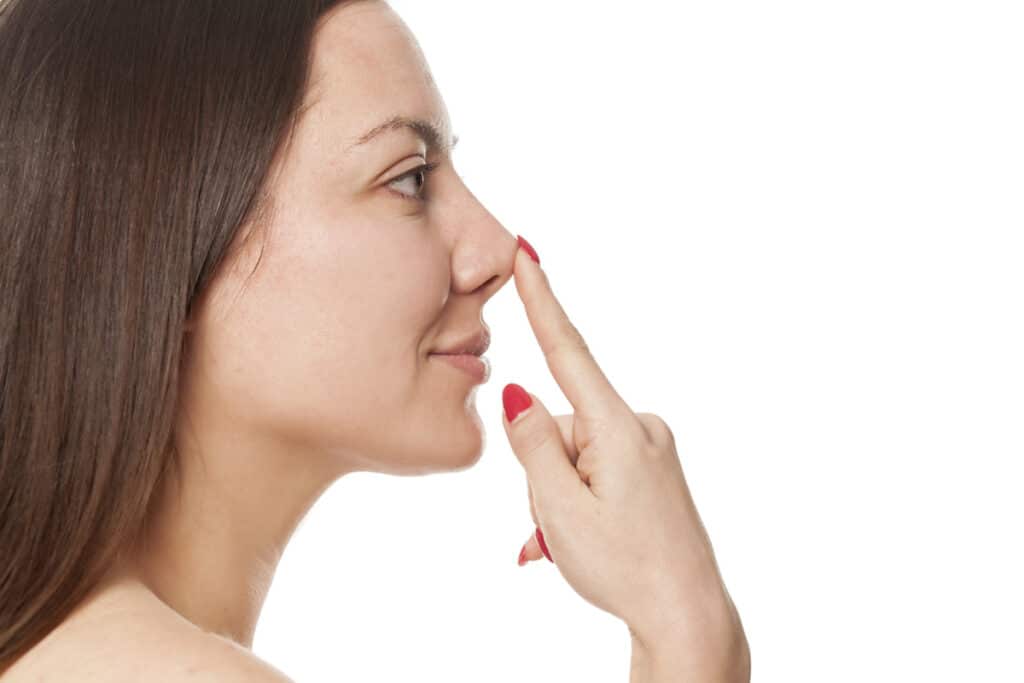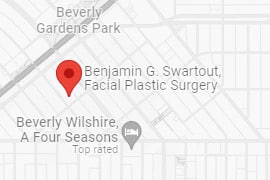
Are you seeking to refine the nuances of your nose? Rhinoplasty tip revision is a precise procedure that focuses on reshaping the tip of the nose to achieve balance and proportion. Dr. Benjamin Swartout has the specialized knowledge and skills to carry out this intricate task successfully. His expertise not only enhances your appearance but may also result in better breathing.
Dr. Swartour has a methodical approach to correcting previous surgeries or inherent nasal asymmetries. He tailors his techniques to each unique case, ensuring patient-specific results in successful rhinoplasty tip revisions that highlight both artistry and technical precision.
Understanding the Anatomy of the Nasal Tip
Surgeons focus on cartilage during nasal tip revisions. The lower lateral cartilages need reshaping for better aesthetics. The structure must be altered carefully to achieve symmetry.
Thick skin can hide cartilage details, while thin skin may show imperfections. Rhinoplasty surgeons must consider the skin’s thickness to ensure a smooth appearance after modifying the tissues beneath.
Common Reasons for Rhinoplasty Tip Revision
Patients might need further refinement for aesthetic outcomes after previous rhinoplasty. Tip revision can correct issues like lack of definition or asymmetry.
Nasal function problems, like breathing difficulties, also lead to revisions. Correcting the nasal structure can improve airways restricted by past surgeries.
Pre-Operative Assessment for Revision Candidates
When preparing for a revision procedure, surgeons examine the nasal tip’s support and changes from the initial rhinoplasty. They look for issues like tip asymmetry and over-rotation. Surgeons with experience in revision surgery can identify small details that affect the nasal anatomy, considering how the tip might handle more changes.
During the consultation, a rhinoplasty specialist reviews past surgery outcomes. They’ll:
- Go over the patient’s surgical history.
- Evaluate scar tissue effects.
- Understand patient concerns for the revision surgery.
- Tailor a surgical plan
The consultation sets realistic expectations, important in complex revision rhinoplasty surgery. Experience matters, as does the surgeon’s ability to explain likely outcomes from the unique anatomy and past procedures.
Techniques in Rhinoplasty Tip Revision
Open vs. Closed Rhinoplasty Approaches
In revising the tip, surgeons may opt for open or closed rhinoplasty techniques, each suited to specific needs. The open technique, involving a tiny cut under the nose, provides superior access for more complex changes. It allows for extensive modification and detailed reshaping of the nasal tip, though it may lead to a slightly longer recovery time. On the other hand, closed rhinoplasty, which is less invasive with internal cuts, offers quicker recovery. However, it is somewhat limited in scope, making it ideal for less complex cases where extensive access to the nasal structures is not as critical.
Grafting Techniques to Reshape the Tip
To refine and enhance the tip’s shape, surgeons often employ advanced techniques, using cartilage from the septum, ear, or ribs. These grafts are crucial for providing structural support and refining the tip’s appearance, particularly in cases where the nasal structure requires significant modification or reinforcement. The choice of graft material and the technique used is carefully tailored to each patient’s specific needs, ensuring a natural-looking result that harmonizes with the overall aesthetics of the nose.
Precision Suture Methods for Tip Definition
Precision suture methods are an integral part of refining the nasal tip’s structure. These techniques involve using specific sutures to subtly correct minor flaws and enhance the tip’s definition. This approach is less invasive and focuses on refining the existing nasal structure. It is particularly effective for patients who need minor adjustments to achieve a more defined and proportionate nasal tip, without the need for extensive surgical interventions.
Surgeons consider the patient’s needs and the nose’s structure when choosing the surgical procedure. A Beverly Hills revision rhinoplasty procedure uses these methods to craft a balanced nasal tip.
Advances in Rhinoplasty Tip Revision Techniques
Advanced rhinoplasty techniques include the use of new surgical tools. These tools allow reconstructive surgeons to reshape the nasal tip with precision. Skilled plastic surgeons use these instruments to minimize damage and increase accuracy. Additionally, recent materials improve outcomes in plastic surgery procedures.
A minimally invasive approach for nasal surgery has progressed, benefiting patients with faster recovery and less discomfort. Surgeons make small incisions and use endoscopic technology for a clearer view inside the nose. These advancements highlight the surgical skills necessary for effective rhinoplasty tip revisions.
Post-Operative Care
Aftercare and Recovery
Post-operative care begins after surgery and helps patients during the initial recovery. The surgeon provides detailed instructions for rhinoplasty pain control, wound care, activity levels, and signs of infection. Following these steps is essential for a quick and safe recovery.
Maintenance for Recovery
Long-term care is crucial for maintaining the benefits of surgery. It involves regular follow-up visits, possible physiotherapy, and lifestyle changes. These actions help patients achieve full revision rhinoplasty recovery and the best results from their procedure.
Challenges in Tip Revision Surgery
Before revision surgery, it’s important to identify risks by analyzing the patient’s nasal structure and prior corrections. This evaluation helps us expect and plan for issues like scar tissue or nasal obstructions, ensuring the preparation for a complex procedure.
After surgery, swiftly managing any complications is key to successful corrections. Some issues might include asymmetric results, breathing problems, or the need for further corrections. Monitoring the healing process helps mitigate these and supports a positive outcome.
Evaluating the Success of Rhinoplasty Tip Revisions
The success of a revision rhinoplasty in Los Angeles relies on aesthetic and functional outcomes. The criteria for success include:
- Enhanced appearance that meets patients’ expectations.
- Resolution of functional issues for better breathing and nasal structure.
Surgeons assess success using patient feedback to understand their satisfaction with the nose’s appearance and functional improvements. This feedback reflects the skill used to meet the desired goals and informs future procedures.
Outcomes after Surgery
Improved Nose Shape
Rhinoplasty tip revision significantly improves nose shape, particularly for those with a bulbous nasal tip. This surgery refines the nasal tip, enhancing the overall facial structure and balance. The result is a more aesthetically pleasing and proportional nose, boosting patient satisfaction and confidence.
Enhanced Nasal Airway Function
Nose surgery often leads to improved nasal airway function. It corrects functional concerns like deviated septums, enhancing breathing and overall respiratory health. This outcome is vital for those whose primary concern extends beyond cosmetic appearance to functional improvement.
Correction of Excessive Scar Tissue
This surgery addresses excessive scar tissue from a primary rhinoplasty, affecting nose structure and nasal airways. By removing or reshaping scar tissue, the revision restores a more natural look and function. It’s especially beneficial for patients with multiple nasal surgeries.
Restoration of Nose Structure After Injury
Rhinoplasty tip revision restores nose structure damaged by injury or prior surgery. It realigns nasal bones and reshapes the tip cartilage, improving both appearance and functionality. This is crucial for patients who have suffered traumatic injuries, as it aids in regaining their nose’s original form and function.
Consult with a Facial Plastic Surgeon
If you’re considering enhancing the appearance of your nose or correcting a previous procedure, expert guidance is crucial. Dr. Benjamin Swartout’s mastery in rhinoplasty tip revision can help you achieve your aesthetic goals with precision and care.
Ready to take the next step? Schedule a consultation with Dr. Swartout and explore personalized options for a natural and harmonious outcome. Embrace the confidence that comes from entrusting your journey to a renowned specialist.

